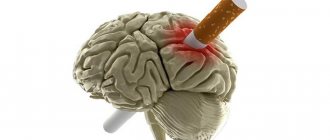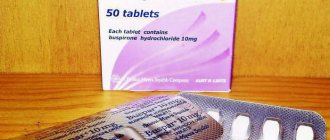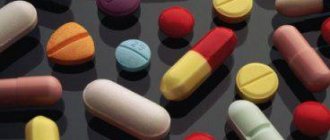Prerequisites for the appearance of dependencies
Anxiety is the main inconvenience of every modern person who is trying, to the best of his ability, to follow progress, strive for self-development and achieve specific, significant results in his career, hobbies and personal life. This is a worthwhile and noble goal. But sooner or later, everyone is faced with what today is called oversaturation of the information space.
The abundance of social networks, marketing, which flows like a fountain into the head and forms a stable inferiority complex - all this leaves a person no chance to decide on the most important priorities in life and leads him into a vicious circle, as in the well-worn saying: “If you chase two hares, you won’t get any.” you'll catch it." In a trap, in an attempt to get out of which and become fully successful, a person gets hooked on psychoactive substances, and if for the majority these are “completely safe” stimulants like caffeine and nicotine, then some people end up smoking weed, using dubious quality “experimental” nootropics .
In other words, people with an already alarming personality radical, in an attempt to overcome characterological problems, become addicted to substances and thereby “rock the boat”, receiving as a makeweight an extremely common and even fashionable symptom today - panic attacks.
Panic attacks are the most common manifestation of vegetative-vascular dystonia and are often described as an unexpectedly sharp manifestation of fear and anxiety, occurring with the presence of vegetative symptoms - dizziness, tachycardia, numbness of the hands, severe sweating and pallor (or, on the contrary, the face turns red). The space around, people and objects in this state are perceived especially acutely, time seems to slow down, and even quiet sounds “resonate in the head.” Also characteristic is a feeling of prostration and deep immersion in thoughts about a traumatic situation, often the presence of hypochondria.
Smoking addiction and panic attacks
We all know very well how negatively smoking affects health, but until now the topic of the relationship between smoking and panic attacks has not been clearly and clearly discussed. And it is very relevant. After all, three of the most frequently asked questions when visiting a doctor, psychologist or psychotherapist specializing in the treatment of panic attacks are as follows:
- Is it possible to smoke during panic attacks?
- As soon as I quit smoking, panic attacks immediately began. What to do?
- Does smoking really contribute to the recurrence of panic attacks, and if so, how to get rid of the addiction comfortably and quickly?
Obviously, the problem is extremely serious. And the short answer is yes - smoking is what causes panic attacks the most. In other words, smoking during panic attacks is strictly contraindicated. And the point is not even in the specifics of a particular substance, but in the bioavailability of the method itself. Panic attacks when quitting smoking and panic attacks after smoking weed are equally common, although they have different causes. Without going into too much psychopharmacology, this is caused by the release of two excitatory neurotransmitters - adrenaline and glutamate. In high concentrations, they cause the “narrowing of consciousness” so characteristic of PA.
There are, of course, several significant “buts”:
- Hiding the truth from themselves and hiding behind a sonorous diagnosis, some cannot even think about how quickly they can remove this by working in detail on internal stimuli and identifying deep-seated goals. The result is the achievement of harmony with oneself and the surrounding reality.
- Wait a minute, right off the bat the reader will immediately exclaim: “when a panic attack begins after smoking or, on the contrary, panic attacks debut after quitting smoking, do you think that these are jokes, that this is just a sound diagnosis?” Not at all. Withdrawal symptoms, like panic attacks themselves, can be easily relieved pharmacologically. But only by understanding the root of the problems will you achieve true success. Indeed, often, when taking this or that psychoactive substance on a regular basis, a person does not realize, loses sight of, or simply does not notice the obvious relationships that lead to a dead end. This is also influenced by the dose-dependent effect of nicotine itself, which is calming and invigorating at minimal concentrations and causes severe anxiety at high concentrations.
Effect of cigarettes on disease
The effect of cigarettes is due to the content of not only nicotine in smoke, but also formaldehyde, carbon monoxide, and arsenic. These substances provoke or aggravate pathological changes in the body.
First of all, the cardiovascular system suffers, its main function - the delivery of oxygen to tissues - is disrupted. Under the influence of nicotine, already narrowed blood vessels spasm, and carbon monoxide displaces oxygen from its connection with hemoglobin. Therefore, smoking during VSD leads to more pronounced oxygen starvation of all organs. Arsenic and formaldehyde poison an already weakened body.
Important information: What should be the pressure during VSD
The consequences of a lack of oxygen manifest themselves in all organs and systems. As a result of cerebral vascular spasm, psychogenic disorders are observed, manifested in decreased concentration and memory impairment, nervousness, anxiety and insomnia. Patients mistakenly perceive smoking breaks as a way to concentrate, but the same effect will be achieved if you simply go outside and get distracted.
The respiratory system takes the brunt of smoking; the lung tissue is constantly poisoned and loses its ability to effectively extract oxygen from the inhaled air. The lungs suffer from a lack of nutrients, and connective tissue grows in the alveoli.
The functioning of the bronchial tree changes not only from cigarettes, but also from impaired innervation against the background of VSD, as a result of which chronic obstructive disease gradually develops. The patient begins to experience a debilitating cough, a feeling of suffocation, and the inability to breathe deeply. Due to respiratory failure, work capacity decreases, a person is forced to take breaks when walking, and is practically unable to run or do physical exercise.
The narrowing of blood vessels, which are already spasmodic due to VSD, leads to increased blood pressure and increased heart rate. The heart takes a double blow - it is forced to work in an increased mode to compensate for the lack of oxygen in the body, but at the same time it itself does not receive sufficient nutrition due to the constant spasm of the coronary arteries. As a result, myocardial infarction may develop.
Nicotine also affects the autonomic innervation of the intestine, improving motility. Due to the fact that in vegetative-vascular dystonia a frequent manifestation is disturbances in the functioning of the intestines, the patient observes improvements when smoking. But this seemingly beneficial effect is deceptive. With prolonged smoking, the intestines stop working independently without stimulation by nicotine. Therefore, when trying to quit smoking, a person may develop problems with bowel movements.
Important information: List of remedies for VSD (vegetative-vascular dystonia)
Spasm of the capillaries of the upper and lower extremities, observed with dystonia, from cigarettes can worsen until they collapse (obliteration). In this case, signs of ischemia are observed in the distal parts of the limbs, tissue begins to die, so amputation is required. If the operation is not performed in time, gangrene develops and the person’s life is at risk.
How long can you smoke safely?
The answer to the question whether it is possible to smoke with VSD is unequivocal - no.
One of the recommendations for the prevention of vegetative-vascular dystonia, alleviating its symptoms and preventing complications is a gradual cessation of smoking. First, the smoker needs to reduce the number of cigarettes, and then get rid of the addiction completely.
But in doctors’ practice there are patients who, even after a myocardial infarction, stroke or finger amputation, continue to smoke. This attitude can be fatal.
Smoking during VSD and panic attacks: main points
- The symptoms of vegetative-vascular dystonia, in essence, are only a more erased form of panic attacks.
- VSD is a predisposition to panic attacks. Panic attacks are the result of an abnormally acute reaction to stress.
- Smoking provokes panic attacks and this manifests itself especially sharply in people with a predisposition, that is, vegetative-vascular dystonia.
- The term VSD itself is fundamentally incorrect from the point of view of pathogenesis. It does not apply to blood vessels, affecting only the neurotransmitter background and hormones such as cortisol, thyroxine and DHEA.
Double punch
VSD manifests itself most acutely during stress in the form of:
- insomnia;
- nervousness;
- headaches;
- lump in throat;
- lethargy;
- apathy;
- pain in the heart;
- cardiopalmus;
- increased sweating;
- numbness of the limbs;
- shortness of breath.
All these symptoms also appear in chronic smokers, as a result of poisoning of the body with substances contained in nicotine. So it turns out that the symptoms of vegetative-vascular dystonia become stronger if a person smokes.
VSD and smoking also cause disorders of the nervous system, such as irritability, mood swings, anxiety, neurasthenia, and can also cause a variety of phobias, suspicion, and depression may appear. This is due to the fact that the nervous system is quickly depleted. And if a person suffering from VSD also smokes, then he receives an increased load on the body.
Getting rid of panic attacks and tobacco addiction
A modern arsenal of psychopharmacological agents will help you get rid of panic attacks, as well as smoking. First of all, anti-anxiety drugs are used to alleviate both the course of VSD and withdrawal symptoms (there are many of them, we will only mention Stresam and Buspirone). Next come special drugs aimed specifically at combating smoking, and a gradual reduction in dosage is recommended. Champix is especially good. In addition, real alternatives are nicotine patches, aerosols and electronic cigarettes, which ensure a smoother flow of nicotine into the body.
Classification of the disease
There are the following main types of panic attacks:
- those that arise spontaneously, without apparent causes or provoking factors;
- situational attacks - occur when a person experiences certain situations, conditions or circumstances that cause psychotraumatic manifestations for him;
- conditional situational attacks - most often manifest themselves under the influence of certain factors, for example, a chemical or biological stimulus (drinking alcohol, smoking, caffeine, hormonal changes).
There is a hypothesis that a panic attack has occurred to one degree or another in the life of every person after a certain amount of stress as a natural reaction. Attacks can be accompanied by various somatic pathologies, mental disorders, and depression. With panic attacks, each person who suffers from them experiences varying degrees of symptom intensity. One person may feel a little anxious, while another may feel fear or even terror.
Causes of the disease
The causes of such a disorder can be long-term psychologically traumatic situations, frequent stressful conditions, sometimes there is a hereditary predisposition to panic attacks, temperamental characteristics, hormonal changes, diseases (thyroid gland, heart, pancreas). Very often, panic attacks can occur in people who are addicted to drinking alcohol; in this case, the attack occurs in a state of withdrawal syndrome (hangover). The cause of a panic attack can be a positive event, but accompanied by positive stress (moving to a new place of residence, marriage, birth of a child).
Manifestations of such an unpleasant illness may appear during negative stress - divorce, death of a loved one, loss of a job. Panic attacks can also be caused by physiological factors, for example:
- a deviation in the functioning of the heart, as a result of which one of the valves does not close correctly;
- hyperthyroidism (dysfunction of the adrenal glands);
- hypoglycemia;
- constant use of stimulant substances or drugs, such as nicotine, alcohol, caffeine, medications;
- when a person stops using certain medications.
Whatever the cause of such attacks, in order to successfully treat the latter, it is necessary to first eliminate the cause or factor that provokes the disease.
Signs and symptoms
All symptoms of panic attacks are usually divided into typical and atypical signs. The first include manifestations such as cardiovascular symptoms. They require frequent medical attention - tachycardia, disruptions in the normal functioning of the heart, chest pain, hypertensive crisis, rapid heartbeat, breathing and pulse. Another common complaint is suffocation, which is accompanied by a lack of oxygen, sweating, a rush of heat or cold, nausea, dizziness, derealization, and fear of dying.
As for atypical symptoms, these are: convulsive contractions of muscles, upper or lower extremities, disturbances in the normal functioning of vision or hearing, impaired coordination of motor activity, feelings of a “lump in the throat,” fainting, repeated bouts of vomiting. Sometimes at the end of the attack there is involuntary urination.
Signs of an unpleasant illness often resemble various diseases. Signs of such a process progress over time and reach a maximum in a short time. A panic attack differs from somatic illnesses in that it occurs sharply and suddenly. The majority of such processes occur in normal human life during the waking period. If this happens in a dream (which happens very rarely), then the panic attack occurs for a long time and with severe manifestations. On average, an attack lasts about 30 minutes.
A panic attack can only happen once. But even with a single occurrence of such a process, a person subconsciously expects the next attack, which is certainly provoked by an anxious state and depressing expectation, so a vicious circle is formed. Panic attacks may be a consequence of a situation that you think threatens you in some way, or may accompany other disorders (social phobia, depression).
Treatment and prevention of panic attacks
An effective method in treatment is the use of hypnotic techniques, when an attitude is instilled in a person, the causes of such attacks are clarified and they are eliminated. Drug therapy includes taking antidepressants and anti-anxiety medications. Such drugs can quickly relieve the symptoms of a panic attack or ease the course of the process. But drug therapy is used for a short time. It is good to combine several methods for treatment (hypnosis, visiting a psychologist or psychotherapist, medications).
To prevent attacks, be fully prepared - find out as much as possible about your problem. This way you can take a step towards recovery, because you will know the possible causes and main symptoms and how to get rid of them.
Avoid caffeine and quit smoking, as this may trigger another attack.
Learn to control your breathing, perform special breathing exercises. Learn to relax, meditate, spend your leisure time with health benefits, and eat a balanced diet.
VSD is a disease that includes a set of symptoms indicating a malfunction of the vascular system.
In modern medicine, vegetative-vascular dystonia is considered as a combination of various symptoms, and not as a separate disease. The main feature is that its symptoms cause illness throughout the body.
Before diagnosing VSD in a patient, the doctor must rule out other dangerous diseases.
Smoking is especially dangerous for VSD. Why and what this can lead to, we will consider in the article.
A smoker should know that smoking and VSD are incompatible. Nicotine puts a strain on the cardiovascular system, which is already suffering greatly.
Treatment of VSD
The main treatment is carried out through physiotherapeutic procedures, such as massage and hydromassage, physical therapy and manual therapy, as well as herbal medicine and acupuncture.
It must be remembered that self-medication is dangerous to health, despite the fact that the disease is easily treatable. Any prescriptions should be made by a doctor after a series of studies, since dystonia is often disguised as another disease. In this case, the underlying disease should be treated. Dystonia can be a symptom of various diseases, which, when cured, will relieve you of VSD.
But the most important thing is prevention. You need to avoid stressful situations and not bring yourself to depression, do not overload yourself with physical activity and, of course, quit smoking.
Where does VSD come from?
Many experts agree that dystonia is a consequence of a psycho-emotional shock. After this, the general condition of the body deteriorates, which leads to a malfunction of all organs.
- Emotional overload.
- Prolonged depression.
- Constant stress.
- Weak immune system.
- Physical overload.
- Insomnia.
- Problems with the spine.
- Smoking, alcohol and drugs.
General
There is no need to talk about how harmful a habit such as smoking is. We have all heard and read many times that smoking leads to lung cancer. In addition, the condition of the skin, hair and teeth deteriorates significantly. With VSD, smoking is especially dangerous, as it significantly undermines the functioning of the entire body. The chances of recovery in this case are practically reduced to zero.
Against the background of dystonia, which negatively affects the functioning of the nervous system, symptoms such as panic attacks, depression, and various phobic reactions may develop.
Smoking only worsens all these manifestations.
Many smokers, in order to calm down, smoke cigarette after cigarette, which saturates the body with harmful substances, which in turn has a detrimental effect on the body.
To summarize, we can say that smoking only worsens VSD, which can lead to irreversible consequences.
VSD after smoking
Despite the fact that many smokers claim that quitting smoking does not improve their condition in any way, but rather the opposite, this is far from true. Of course, one or two days will not change anything in the body. You need to understand that you have been smoking for a long time and have saturated your body with harmful substances. Accordingly, it will take a lot of time to remove them from the body.
Scientists have proven that giving up cigarettes improves the body's protective functions and brings them back to normal over time. Symptoms of VSD after quitting smoking begin to gradually recede.
Common emotional features of smoking and VSD
Against the background of smoking cessation, an exacerbation of VSD symptoms is possible. Over the course of several years, a number of chemical compounds entered the smoker’s body, which were artificial stimulants for the functioning of organs and systems of the body. During smoking withdrawal, the body is deprived of stimulants and tries to compensate for their lack, thereby worsening the person’s well-being.
Common emotional features of smoking withdrawal and VSD:
- Decreased attention.
- Difficulty sleeping.
- Depression.
- Irritability.
At the same time, the main obsessive thought is to light a cigarette. There is often a feeling of extreme hunger. This is how the body tries to return or compensate for nicotine and other stimulants.
According to statistics, the physical symptoms of VSD that appear after quitting smoking disappear within 7-10 days. Psycho-emotional signs of VSD take much longer to resolve.
What is the danger of smoking with vegetative-vascular dystonia?
Smoking with a disease of the nervous system can be not only harmful, but also dangerous. This bad habit significantly worsens the condition of blood vessels, which in turn can lead to various diseases, as well as disrupt the functioning of the cardiac system as a whole.
Unfortunately, not all smokers can immediately pay attention to the symptoms of VSD. They are very similar to the negative manifestations of a heavy smoker. A person, perceiving such manifestations as a consequence of his negative habit, turns a blind eye to them. People consult a doctor, as a rule, in the later stages of the disease, when long-term and intensive treatment is already required and, accordingly, a complete renunciation of their addiction.
Smoking and disorder
A smoker with VSD must take into account a number of factors:
- Nicotine causes tachycardia. A healthy non-smoking person has a resting heart rate of 70 beats per minute. A person who smokes has a heart rate of 80-90 beats per minute. This, in turn, prevents the heart from filling with blood to the fullest extent.
- Carbon monoxide, which enters the body along with smoke, does not allow it to be saturated with oxygen. This negatively affects the functioning of all organs, especially the heart.
- Nicotine deals a large and often irreparable blow to the nervous system.
- A large amount of it affects the reduction of the hormone that is responsible for blood thinning - prostacyclin. Thanks to it, blood pressure decreases, which eliminates the formation of blood clots. The hormone is also responsible for normal vasoconstriction.
- All smokers have high cholesterol. This in turn leads to the formation of atherosclerotic plaques, which cause a heart attack or coronary heart disease.
- Nicotine also replaces acetylcholine. This is a substance that controls the cells and tissues of the body. Nicotine is similar to it in transmitting impulses, which confuses the organs. As a result, the smoker experiences chronic fatigue, feels irritable, begins to complain about memory, and becomes inactive. The body ceases to recognize acetylcholine and already needs nicotine, which, in principle, leads to addiction.
Is smoking a cause of VSD?
Vegetative-vascular dystonia is not a disease, but includes a number of symptoms of a physical and psycho-emotional state. Having started smoking, a person begins to notice signs of diseases that he had not seen before:
- Shortness of breath.
- Irritation.
- Cardiopalmus.
- Panic attacks.
- Coldness, tingling fingers.
These signals are signs of vegetative-vascular dystonia and the onset of serious diseases. Smoking with VSD contributes to the development of cardiovascular diseases.
In many ways, autonomic nervous disorders are formed under the influence of functional or organic lesions.
Each cigarette leads to the compression of blood vessels, increases the pulse rate, increases blood pressure and the intensity of the heart. The regularity of these phenomena causes changes in the functioning of the autonomic nervous system, which ultimately contributes to the occurrence of vascular dystonia.
Pathology can be determined by the following symptoms:
- rapid heartbeat;
- constant fatigue;
- blood pressure surges;
- systematic headache;
- sudden attacks of dizziness;
- labored breathing;
- slowing down the thinking process;
- weakening memory.
- Emotional overload, depression and stress;
- Irregular sleep and heavy physical activity;
- Spinal diseases;
- Infectious diseases, decreased immunity.
The main three types of dystonia:
- Heart type;
- Hypotensive form;
- Hypertensive form.
Negative manifestations after smoking one cigarette
One of the dangerous manifestations may be an increase in blood pressure, which can lead to a stroke. Even after one cigarette, the smoker begins to experience tachycardia and vasoconstriction.
Smokers also often experience panic attacks and psycho-emotional agitation.
Even after one puff, arrhythmia and dizziness may occur.
A smoker suffering from dystonia should be aware that the symptoms of VSD are significantly aggravated by smoking.
Subsequently, the smoker finds himself in a vicious circle, which leads to exhaustion of the nervous system. Stress and tension force a person to smoke cigarette after cigarette, which further worsens the course of the disease. Over time, the “snowball” grows, and stopping it becomes simply unrealistic.
What do habits and illness have in common?
What do smoking and VSD have in common? First of all, you should consider what changes in the body occur after smoking a cigarette due to nicotine entering the body.
People suffering from VSD may experience panic attacks (PA) and an inability to concentrate.
How does the body react to smoking a cigarette? After smoking one cigarette, the following vegetative changes occur in the human body:
- The heartbeat quickens and pulsation appears in the temples, blood pressure rises due to the release of adrenaline and vasospasm.
- Possible severe agitation or PA.
- In some cases, arrhythmia appears.
- Dizziness occurs when you puff too hard.
- It is possible to develop a headache due to spasm of cerebral vessels.
These symptoms get worse if you smoke 2 or more cigarettes one after another.
Reviews from doctors about the dangers of smoking indicate that it provokes not only metabolic disorders, which can lead to atherosclerosis of blood vessels, but smoking also causes a sharp spasm of the body’s blood vessels, which leads to impaired blood circulation and the appearance of dizziness, a feeling of “interruptions” in the functioning of the heart , headache. Therefore, smoking with VSD can intensify symptoms and aggravate the course of the disease.
How does smoking affect the heart in VSD?
As we found out earlier, nicotine affects the walls of blood vessels, and carbon monoxide limits the flow of oxygen into the body. As a result, all resources of the cardiac system gradually begin to deplete.
One of the dangerous symptoms is increased blood clotting, which can inevitably lead to stroke, myocardial infarction or pulmonary infarction. Increased nicotine levels lead to increased cholesterol levels, and this, in turn, leads to the formation of atherosclerotic plaques.
Experts say that the combination of VSD and smoking sooner or later leads the smoker to a hospital bed in the cardiology department.
Smoking in hypertensive form of VSD
With the hypertensive variant of the course of dystonia, the blood pressure level rises above the age norm. A person is often bothered by headaches, dizziness, and nausea. Tobacco smoking leads to the following consequences:
- Spasms and narrowing of blood vessels, and this significantly increases blood pressure. A constant supply of nicotine triggers many pathological mechanisms that lead to persistently high blood pressure.
- The appearance of disturbances on the internal walls of blood vessels. Harmful substances from tobacco (tars, benzopyrene, radioactive isotopes) settle inside the vessels. With constantly elevated blood pressure, conditions are created that allow toxins to penetrate deep into the tissues, which contributes to the formation of damage.
- The formation of atherosclerotic plaques that clog blood vessels, creating conditions for the occurrence of vascular accidents - heart attack and stroke.
Smoking in the hypertensive form of dystonia creates conditions for increased blood pressure and also causes a more severe course of VSD.
Respiratory system diseases
Very often, dystonia leads to breathing problems. A person who smokes feels all the negative symptoms of this disease several times more strongly:
- Lack of oxygen.
- Heavy breathing after smoking a cigarette.
- Dizziness from lack of oxygen.
As a result of nicotine abuse, a disease such as bronchial asthma can develop.
The connection between smoking and panic attacks in VSD
We all know about the negative effects of nicotine on the body. But not all smokers understand how serious the problem can be.
Not many people know that most cases of panic attacks are associated with such a bad habit as smoking.
Smoking during VSD and panic attacks greatly increases the chances of a heart attack and is strictly prohibited.
Without going into the details of psychopharmacology, it can be noted that nicotine increases the level of adrenaline and glutamate. This is what leads to a “narrowing of consciousness.”
This condition is especially aggravated by abrupt cessation of cigarettes. The condition may be similar to when a person smokes a cigarette with narcotic components or, as people call it, “weed.”
Properly selected medications will help you get rid of not only PA, but also a bad habit. Anti-anxiety medications are prescribed first. They will help the smoker not only get rid of the main problem, but also ease the course of VSD. At the next stage, the patient should be prescribed medications aimed at combating smoking. A method of gradually reducing the dosage will be effective and less traumatic for the psyche. Abrupt withdrawal from nicotine will lead to destabilization of the functioning of all organs. To prevent the body from experiencing such stress, you can seek help from a patch, nicotine tablets or electronic cigarettes. These supplements will provide only a small amount of nicotine into the body, gradually reducing its level.
The help of a qualified specialist will not be superfluous. High-quality psychotherapy with the elaboration of all problems will help you quickly and least stressfully cope with the problem of smoking, neurosis, PA and VSD.
Just as with PA, VSD, smoking with neurosis is especially contraindicated. Many smokers are misled into thinking that cigarettes help them cope with stress. Nicotine only masks the main symptoms of the disease, driving them inside.
Smoking and blood clots
Nicotine reduces the hormone prostacyclin in the body. It is formed in the cardiovascular system and protects it from blood clots, vascular obstruction, and also normalizes blood pressure. A decrease in prostacyclin is fraught with the appearance of blood clots and the subsequent development of diseases such as myocardial or pulmonary infarction, cerebral stroke.
People who smoke have increased blood clotting rates, which also increases the likelihood of blood clots.
Smokers have high levels of cholesterol in their blood. Because of it, atherosclerotic plaques form, which impede blood flow, which also leads to cardiac dysfunction.
Getting rid of a bad habit
Quitting smoking, especially if you have been smoking for more than one year, will be very difficult. But what you get in return is incomparably greater. One of the main benefits is health. How to do this as safely as possible for the body?
The first thing that can help is a psychological attitude. A person must realize that giving up a bad habit is what he needs first of all. Auxiliary products can be chewing gum, tablets, patches, and candies.
If you have VSD, neurosis, or PA while quitting cigarettes, it is best to seek help from a specialist who will prescribe the correct treatment.
When quitting smoking with VSD, the help of a psychologist or psychotherapist will be important. It all depends on how the disease progresses and what consequences it brings.
If the cause of VSD was quitting cigarettes, then the symptoms will go away after just one month.
What to remember when quitting cigarettes:
- Drink as much clean water as possible to remove toxic substances accumulated during smoking from the body.
- During therapy, do not drink coffee or alcohol. These substances dull the sense of self-control.
- Walk more in the fresh air.
- Regular physical activity will help greatly. They help fight insomnia and reduce symptoms of VSD.
If smoking is the cause of VSD, you should quit such a bad habit immediately. Learn to enjoy life as it comes. Love and take care of yourself.
How to quit without harming yourself
To overcome the bad habit of smoking, you first need a psychological attitude. The thought “I quit smoking” should be categorical and categorical. You need to fuel this thought in every possible way, doing everything possible so that this mood does not pass. There are a number of nicotine-containing drugs that alleviate the symptoms of VSD when quitting smoking - lozenges, chewing gum, tablets, patches... If you have chronic diseases, vascular pathologies, vegetative-vascular dystonia or health complaints, you need to consult a doctor who will prescribe an examination and supportive therapy. It is strictly prohibited to take medications not prescribed by a doctor! What may help someone else may, at best, be a waste of money for you. There are drugs that are incompatible with each other.
If symptoms of vegetative-vascular dystonia appear after quitting smoking, the problem will most likely be resolved within a month. Often, such symptoms have a psychological origin; you can get rid of them by distracting yourself with something pleasant and joyful. Basic recommendations when quitting smoking: Drink plenty of clean water throughout the day. Water removes toxins from the body and thins the blood. Coffee and alcohol increase the need for nicotine and reduce the level of self-control. Exercise, walks in the fresh air. Physical activity strengthens blood vessels and stimulates the production of hormones that can replace the feeling of “pleasure” that the body received when smoking. Physical activity in the fresh air has a positive effect on sleep and reduces the manifestation of VSD. Get proper rest, sleep 6-8 hours. This time is necessary for the body to recover from a stressful situation and for the signs of VSD to decrease. Avoid smokers. Often, for all efforts to come to naught, it is enough to smoke passively, inhaling smoke from a nearby smoker. VSD and smoking are a dangerous combination. To improve your health, it is simply vital to overcome addiction. To forget about VSD, learn to enjoy life, communication and work; set goals for yourself, achieve them, love yourself and take care.
Reviews from smokers
Anya, 25 years old. “10 months ago I quit smoking. Because of VSD, I had to quit smoking abruptly, without thinking for a long time. Now I sympathize with smokers - they, like me before, ruin their bodies. Be patient; after prolonged destruction of the body, you will have to make efforts to get the blood vessels back to normal. My dizziness has gone away, my aggression has gone away, but anxiety sometimes appears..."
Dasha, 43 years old. “I haven’t smoked for 3 days (I smoked for 22 years), on the second day neurosis and anxiety began, now it still hurts, absolutely everything irritates me, but there are positive aspects. The taste of food has become brighter and I can hear smells better - I like it..."
Arkady, 28 years old. “I smoked for 13.5 years, I smoked a pack a day. I quit smoking - problems began - nausea, panic attacks, I became nervous, I even saw a psychiatrist, he helped me survive withdrawal symptoms. The first week was difficult, symptoms of VSD appeared - increasing anxiety, headaches, sweating, a feeling of shortness of breath and rapid heartbeat..."










